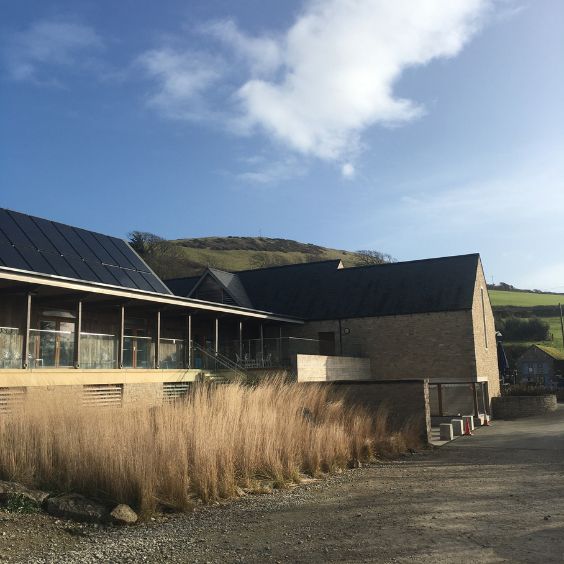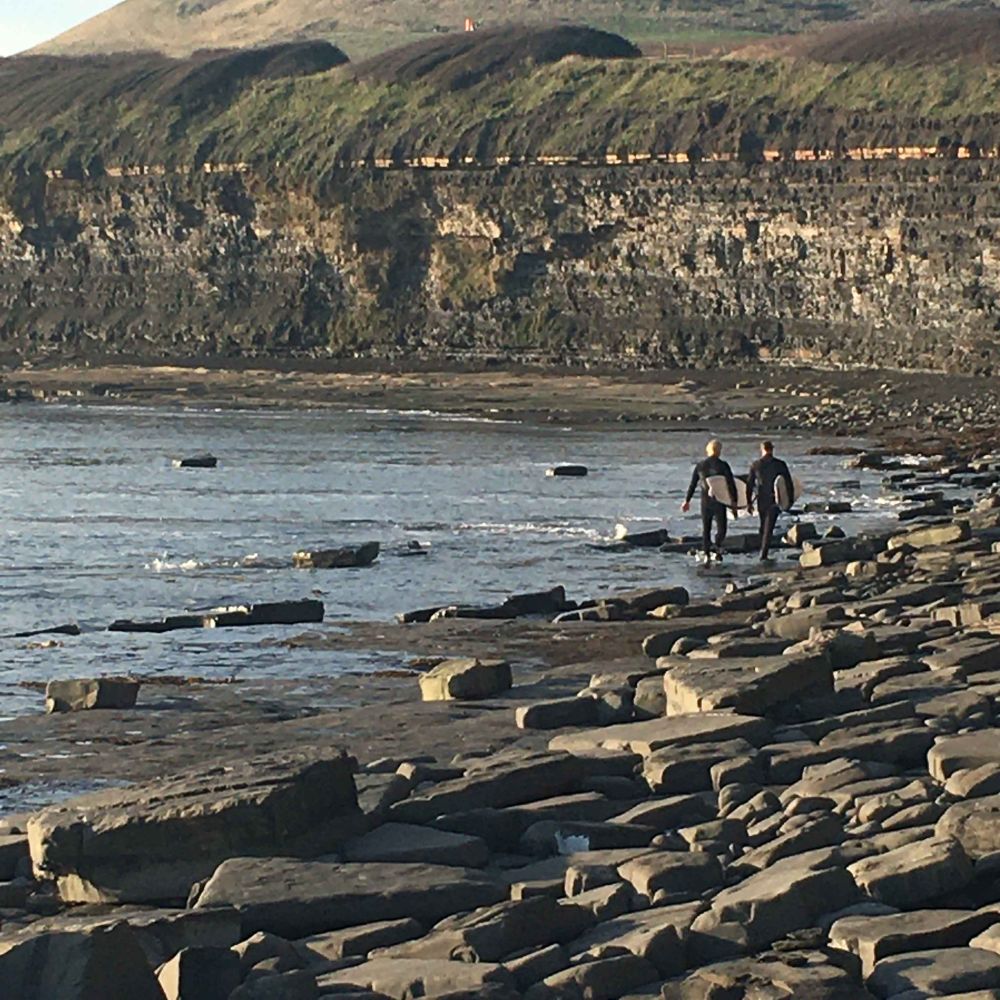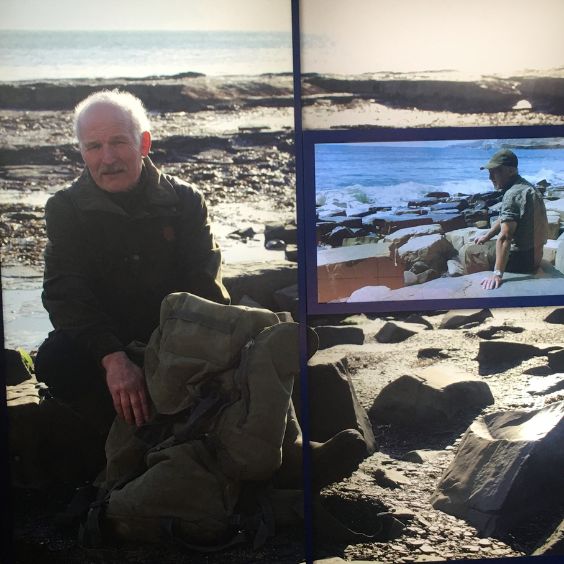If you are interested in prehistoric Jurassic marine life, you won’t want to miss a visit to The Etches Collection in the village of Kimmeridge, approximately 8 miles from our Dorset bed and breakfast.

 The Etches Collection is a unique, modern museum home to Steve Etches’ private collection of amazing fossils. All his fossils of 152 -157 million years ago have been found in the Kimmeridge Bay locality, part of the World Heritage Jurassic Coastline.
The Etches Collection is a unique, modern museum home to Steve Etches’ private collection of amazing fossils. All his fossils of 152 -157 million years ago have been found in the Kimmeridge Bay locality, part of the World Heritage Jurassic Coastline.
Kimmeridge is an area of Outstanding Natural Beauty, nestled among breath-taking scenery, ideal for exhilarating countryside and coastal walks.
 The bay, which is part of the World Heritage Jurassic Coastline, lies within a Site of Specific Scientific Interest and is one of the best places in the UK for exploring rock pools.
The bay, which is part of the World Heritage Jurassic Coastline, lies within a Site of Specific Scientific Interest and is one of the best places in the UK for exploring rock pools.
It was here that an amazing fossil was discovered…
BBC’s ‘Attenborough and The Giant Sea Monster’
If you haven’t already seen this fascinating documentary, then it’s a must that you do, especially if you are considering a stay with us!
The documentary details the incredible adventure to locate and extract the skull of a pliosaur from the 25-metre-high cliff. The pliosaur was the apex predator of the Jurassic seas 150 million years ago, eventually becoming extinct in the Cretaceous period.
The snout of this amazing fossil was first discovered in April 2022 by friend of Steve and fossil collector Philip Jacobs on the beach foreshore not far from Kimmeridge. Philip notified Steve Etches of his find which he donated to the museum, and it took 10 months of intensive preparation and restoration.
According to Steve Etches, the entire length of this ‘Sea Rex’ is estimated to be 10 – 12 metres and is likely to be a juvenile, and not even fully grown! With 150 razor sharp teeth they fed on Ichthyosaurus, and with 4 large flippers, they were capable of swimming 30 mph.

Why Kimmeridge Bay?
The Kimmeridgian world of the late Jurassic period, 150 million years ago, was one of warm seas, and home to a teeming host of marine life from ancient fish, squid, coiled ammonites, sea urchins and turtles to long-necked reptiles like the plesiosaur, the dolphin-like Ichthyosaur and, at the apex of the food chain, the ferocious pliosaur.
 The Ammonite is the most commonly found fossil at Kimmeridge. It was a squid-like animal with a soft body and hard shell. They lived between 240 – 65 million years ago.
The Ammonite is the most commonly found fossil at Kimmeridge. It was a squid-like animal with a soft body and hard shell. They lived between 240 – 65 million years ago.
What is a Fossil and how is a fossil formed?
Definition: ‘The remains or impression of a prehistoric plant or animal embedded in petrified form.’
‘As fossil collector, we have a responsibility that if we are to build on our past discoveries, we must collaborate with our contemporaries to unlock the ‘stories from deep in time.’ – Steve Etches
When a creature dies it normally rots away to nothing. In certain conditions, however, the process of ‘fossilisation’ occurs preserving for millions of years a replica or jumbled clue to that creature’s life. In one form of the process, the dead body sinks to the sea floor to be buried in sediment. The soft tissue rots away but the skeleton, teeth, scales, and hard tissue survive. The sediment builds up over time and the compacted pressure turns it to rock. Now buried at depth and surrounded by stone, the skeleton dissolves and minerals carried by water flow into the space. The minerals harden and millions of years later, when that incarcerating rock rises to the earth’s surface, the fossilised remains of that prehistoric life form invite discovery – passage taken from The Etches Collection.

 About Steve Etches (MBE)
About Steve Etches (MBE)
What started as a childhood hobby for Steve Etches, grew into a lifelong obsession and lifetime of fossil hunting and collecting. He follows in the path of other great 19th Century fossil hunting pioneers such as Mary Anning, from Lyme Regis, who found the first fossilised plesiosaurus and Ichthyosaurus.
Conclusion
In conclusion, Steve Etches and his team embarked on a once-in-a-lifetime excavation to bring back to life a monster of our deep past. They expertly removed the skull of this pliosaur from the cliff. Steve’s dream is to reunite the pliosaus’ skull with its body! By going along to visit The Etches Collection, you can support Steve with this dream!
If you would like to see more of our beautiful Dorset coastline, you may be interested in our blog ‘Walking from Lulworth Cove to Durdle Door’ or our blog ‘4×4 Tour with Purbeck Safari’.
If you have enjoyed reading this blog and would like to learn about latest updates, events in the area or last minute availability at our Dorset B&B, Spurwing Guest House, then you can subscribe to our mailing list.









